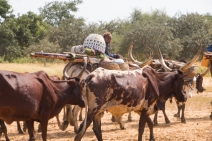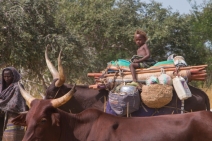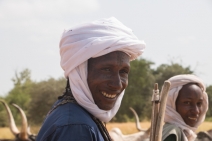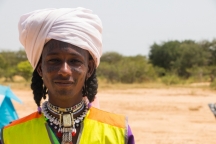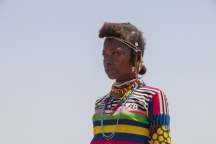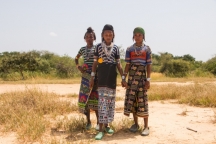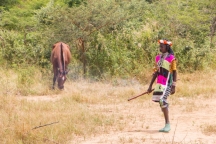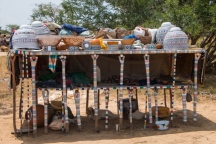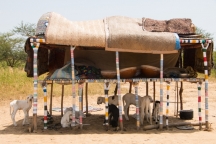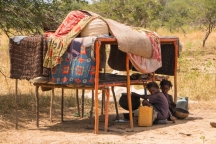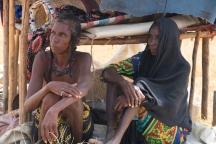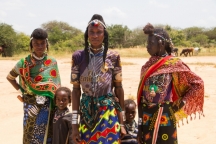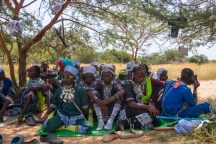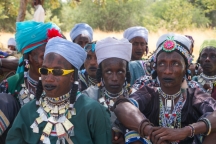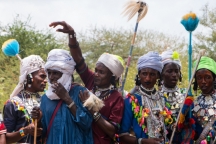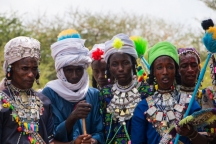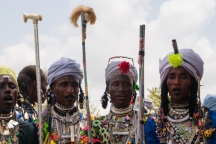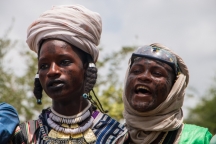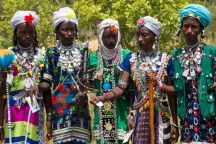Visited in September 2016
I’ve spent 4 years working in Chad on rotation and despite my best efforts to the contrary, have not seen as much of this fascinating country as I’d like. Chad is beautiful and while it is neither cheap nor easy to get to or travel around, it there is enough to see here to make the trip worthwhile for the avid traveler. Meeting the Fulani Bororo people is easily one of the highlights of my Chad experience.
After the start of the dry season, you don’t have to travel very far outside Chad’s capital, N’Djamena, to see the colorful Fulani nomads and their large herds of cattle moving along the main roads. I’ve seen them many times, and had no idea that they represent a large ethnic group migrating across northern Nigeria, northeastern Cameroon, southern Niger, southwestern Chad and northern Central African Republic. My friend and colleague, Jim Guthrie, had made arrangements with Tchad Evasion, a top-notch outfitter in N’Djamena to visit the Fulani Bororo (also known as Wodaabe) at the end of September for a tribal festival as part of his work on a photo essay on Chad. Unfortunately, some of the dates for this venture had changed, so he was no longer able to attend. Fortunately for me, I was able to go in his stead.
We set out from N’Djamena before 6 AM and after about an hour’s drive the road became very bad, with large puddles from the rains the night before. Rainy season seems to have stuck around longer this year. Soon the road vanished and only the occasional big puddles remained. It took over four and a half hours to reach the Bororo camp. As we got closer to our destination we met Fulani Bororo families with their large zebu herds on the road and the smiles of the people we met really set the tone for the rest of the day.
The Wodaabe or Bororo tribe are a subgroup of the Fulani ethnic group numbering about 100,000 people. Bororo can be translated into English as “Cattle Fulani” and be taken to mean, those who travel in cattle camps. This is a pretty exact description of the these peoples’ lives, as this nomadic group travel with their large herds across West Africa, stopping to make camp only for a few days to graze their cattle, before moving on to the next site. The Bororo live on zebu milk and the meat of goats and sheep in their herds. They are followers of Islam since the 16 century, but clearly have their own version of the religion, from what I have observed.
One thing that immediately makes the Bororo stand out among the other ethnic groups of Chad is their attitude towards strangers with cameras. In my experience many Chadian enjoy taking photos and having their picture taken by friends and people they know, but many more are instantly suspicious of strangers with cameras. In fact, I’ve had some uncomfortable encounters, even in situations like trying to take a picture of some water lilies on the side of a road outside N’Djamena. Not so, the Bororo. From our first encounter at the Bororo camp people would come up to us and ask to have their picture taken. One of our hosts told me through a translator to take pictures of everything I wanted, except the donkeys and only because “they are useless animals, so there is just no point in taking their picture”. As my visit coincided with the celebrations at the end of the rainy season, everybody wore their best and it made for some beautiful photos.
Other than some of the older women and kids, the camp site was mostly empty, but it gave me a chance to have a good look around and see the setup of a typical Bororo tent. These tents stand on colorful poles with the floor raised above ground and some of the smaller animals, such as goats resting in the shade of the tent. The roof serves as a storage area for the nomads’ possessions, such as the ornate calabashes, which are a source of pride and passed on from generation to generation. The sleeping area of each tent is fairly small and basic, just enough to spend the night
As I walked around the camp, I met a lady who wanted to have her picture taken with her large and intricately carved calabash. She enjoyed seeing her photos so much, that she came back later with her husband for a family portrait and finally went to get some girlfriends and their kids. The kids were shy at first, but smiled happily to see their photos on the camera screen. I hope to come back next year with some printed photos to give to them.
Meanwhile, the adults of the tribe were preparing for the festival and the men and women gathered separately under big shady trees in their best, most colorful clothes. The men seemed to keep busy trading stories in the share of one tree. At the same time the young women kept busy under another tree, spinning.
Finally, the men lined up and started singing – we were treated to a demonstration of the traditional song and dance, the Yaake, aimed at impressing marriageable women. I am not sure, if what I saw was the real thing, however, as the women stayed under their tree and did not come to see the men perform. I suspect, that what I saw was either just the start of the celebration called Gerewol, which usually lasts a week and includes the contests of skill and beauty among the men, followed by bartering to arrange marriages, or just a performance for the foreign visitors with the main event occurring after the tourists departed. Unfortunately, I had to get back to work and had to leave very quickly after the performance started. Still, what little I did get to see was absolutely fascinating.
My entire visit with these wonderful people only lasted a couple of hours, but this small taste of their life and culture was enough to make me extremely interested in coming back next year and spending a few days with them and really getting to know them. Hopefully one day I will be able to follow up this post with a more detailed story about these fascinating people.


